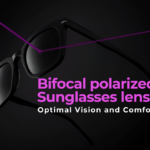 The Best Bifocal Polarized Sunglasses Lenses for Optimal Vision and Comfortby admin / February 10, 2025
The Best Bifocal Polarized Sunglasses Lenses for Optimal Vision and Comfortby admin / February 10, 2025High Index Glue vs. Epoxy Resin: Which Adhesive is Better for Optical Projects?
When it comes to optical projects, selecting the right adhesive is crucial to ensure performance, durability, and precision. Two popular choices in the industry are High Index Glue and Epoxy Resin. Both have unique properties, making them suitable for different applications. In this blog, we’ll compare these adhesives based on their optical clarity, refractive index, bonding strength, durability, and ease of application to help you make an informed decision.
1. Optical Clarity and Refractive Index
- High-Index Glue: Designed specifically for optical applications, high-index glue offers superior optical clarity with a refractive index that matches or exceeds that of glass or other optical materials. This minimizes light distortion and ensures maximum transparency, making it ideal for lenses, prisms, and fiber optics.
- Epoxy Resin: While some clear epoxy resins are formulated for optical use, they generally have a lower refractive index compared to high-index glues. This can result in slight light scattering or refraction issues, which may affect high-precision optical devices.
Winner: High Index Glue for superior optical performance.
2. Bonding Strength and Durability
- High Index Glue: Provides strong adhesion, but it is often more brittle than epoxy resin. This can be a limitation in environments with mechanical stress or thermal fluctuations.
- Epoxy Resin: Known for its exceptional bonding strength and durability, epoxy resin performs well under mechanical stress and extreme environmental conditions. It is resistant to chemicals, moisture, and temperature changes, making it a versatile choice for structural optical assemblies.
Winner: Epoxy Resin for robust bonding and environmental resilience.
3. Ease of Application and Curing Time
- High Index Glue: Typically requires precise application and controlled curing conditions, such as UV light exposure, to achieve optimal results. This can be a limitation for large-scale projects or fieldwork.
- Epoxy Resin: Offers more flexibility in application. It can be mixed and applied with relative ease, and there are fast-curing formulations available. However, it may require careful mixing to avoid air bubbles, which can affect optical clarity.
Winner: Epoxy Resin for ease of use and versatility in curing options.
4. Cost and Availability
- High Index Glue: Generally more expensive due to its specialized formulation and performance in optical applications. It may also have limited availability compared to general-purpose adhesives.
- Epoxy Resin: Widely available and more cost-effective, making it a popular choice for projects where budget is a concern.
Winner: Epoxy Resin for cost-efficiency and accessibility.
Conclusion: Which Should You Choose?
- For High-Precision Optical Applications: If your project demands the highest optical clarity and precise light transmission (e.g., lenses, fiber optics, prisms), High Index Glue is the better choice despite its higher cost and specialized application process.
- For General Optical Assemblies: If durability, ease of application, and cost are more critical factors, especially in environments with mechanical stress or temperature variations, Epoxy Resin offers a reliable and versatile solution.
Ultimately, the best adhesive depends on the specific requirements of your optical project. Consider factors like optical performance, environmental conditions, and budget constraints to make the right choice.



